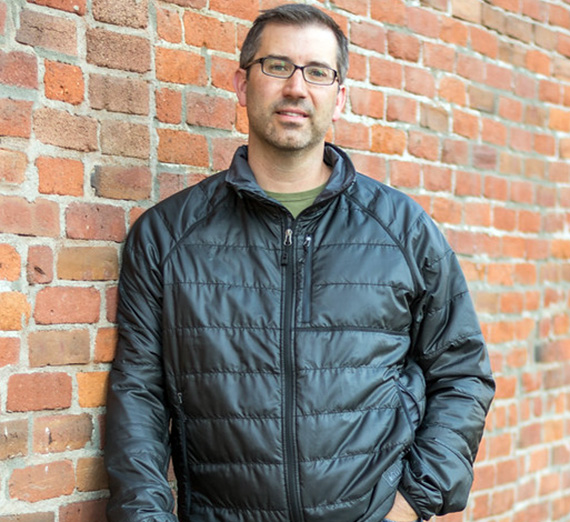Photographer Goodwin's Career Discernment Process

A year ago, I quit my job. After 21 years serving local churches as a pastor, I resigned from my position at Millwood Presbyterian, just a few miles upriver from the Gonzaga campus, where others featured in the “Guided by God” article were on their own journey of discernment.
My decision didn’t really make sense. Our family was a few months from our first college tuition payment. I was in the career I had trained for, with a doctorate degree, a great congregation, and even a pension. There was nothing particular I could point to as cause for a big change, but one afternoon last February, my wife asked me how I was doing, and I said, “I think I’m going to quit my job.”
In retrospect, I can see more clearly some of the circumstances that led to that moment. I was restless and tired from a long, uninterrupted stretch of ministry. I was also disoriented from a recent sojourn in the badlands of cancer. Along with this, I was energized and delighted by an emerging vocation in photography. A chemo-inspired pledge to do an art show led to a small, thriving photo business. My images were starting to show up on the covers of magazines, the National Geographic Instagram feed, and even the walls of the Gonzaga law school. I hadn’t set out to change careers or make a living as an artist, but there was a growing tension between being a pastor and being a photographer.
In some ways, my resignation was an impulse that churned under the surface for years, but there is one thing I can point to that brought it to the fore and gave it urgency. It was a photo of “Grandfather Cuts Loose the Ponies,” also known as the Wild Horses Monument, in Vantage, Washington. It’s an art installation of iron horses on a ridge above the I-90 freeway, halfway between Seattle and Spokane. It’s perhaps the most viewed piece of public art in the country, with over 10 million cars passing by every year. Through the years I developed a relationship with David Govedare, the Native-American artist who created the installation of statues, and my conversations with him sparked an idea for a photo.
I envisioned a composition of a massive moon rising behind the horses, enveloping the wild silhouettes on the horizon. Every time I drove by in recent years, this vision grew in my imagination, awaiting the right conditions and alignment to present itself.
Last January, I showed up for work expecting a normal day of meetings, counseling appointments, and planning for Sunday, but a news flash about an impending super moon sparked the recognition that the opportunity had finally arrived. The planets were literally aligned to get the photo I had dreamed about, but there was one problem. I had a meeting scheduled that evening with elders from the church.
I started down a path of acknowledging that my creative energies would have to take a back seat to my responsibilities. It’s a familiar path to anyone who has lived within the constraints of a career. The wild horses would have to wait until I had free time. My creative visions would have to pause until I didn’t have so much on my plate. My imaginings would need to settle down, until I wasn’t so locked into a schedule of evening meetings and busy weekends.
But something strange happened along the way. I decided I couldn’t wait. I surrendered myself to the muse, and canceled the meeting. I got in my car, and drove two hours to Vantage. I set up the camera a mile away from the horses on the banks of the Columbia River, and immersed myself in the anticipation of the moon peeking above the horizon. When it did, I was out of position, with the moon nowhere near the horses, so I picked up my gear and ran to the north, heart pounding out of my chest. I set back up only to realize I’d gone too far, so I ran back.
The moment had arrived, and I breathlessly mumbled to myself, “Don’t miss it. Don’t miss it.”
I finally got to the right spot and had only a few minutes to set the exposure, compose the image, and click the shutter before the moon was past the horizon.
“Did I get it?” I wondered. I scanned the screen on the back of my camera, and saw some promising images. I packed up my gear and headed home with a deep sense of satisfaction, and a bit of unease.
The experience sparked a recognition that it was time for a change. I couldn’t wait any longer. The moment had arrived. On the drive home, I might have even mumbled to myself, “Don’t miss it. Don’t miss it.”
One of the things that I appreciate about St. Ignatius’ Rules for Discernment is that they preserve the mystery at the heart of the process, even as they provide a reliable structure. They leave room for surprise and serendipity, recognizing that the “Spirit moves as it chooses,” and if we are going to let the Spirit lead, we may find ourselves in unexpected places.
I could have never imagined that God would call me away from my role in the church to be a full-time nature photographer, but here I am, and I’m glad I didn’t miss it.
